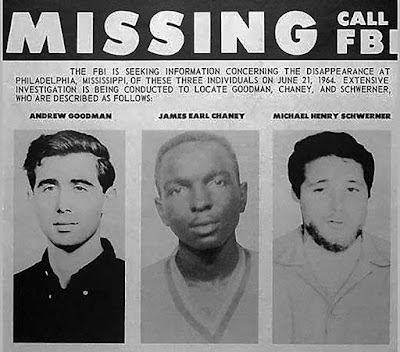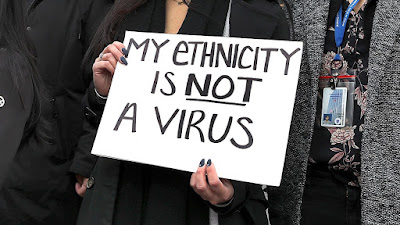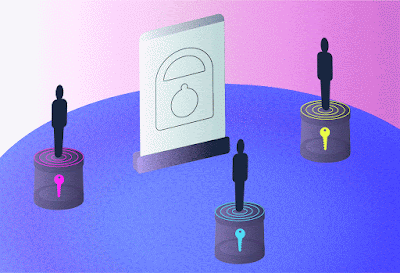All Posts (6505)
Black Super heroes in love? A rare sight
Art by Ramon Peréz
 |
| Comet NEOWISE over Mount Hood on July 11, 2020. Credit: Kevin Morefield Getty Images |
Topics: Astronomy, Astrophysics, Comets
Comet NEOWISE has been entertaining space enthusiasts across the Northern Hemisphere. Although its official name is C/2020 F3, the comet has been dubbed NEOWISE after the Near-Earth Object Wide-Field Infrared Survey Explorer (NEOWISE) space telescope that first noticed it earlier this year. This “icy snowball” with a gassy tail made its closest approach to the sun on July 3 and is now heading back from whence it came: the far reaches of the outer solar system. Its long, looping orbit around our star ensures that after passing closest to Earth on July 22, Comet NEOWISE will not return for some 6,800 years.
Even though the comet is now bright enough to observe with unaided eyes, inexperienced stargazers might have trouble knowing when and where to look. Scientific American spoke to Jackie Faherty, an astronomer at the American Museum of Natural History in New York City, for observing tips and a better appreciation of why comets are so special.
How does one prepare to watch Comet NEOWISE with the naked eye?
Find the darkest possible swath of sky and make sure your eyes are adjusted so that you give yourself the best possible opportunity to see faint objects. It means: don’t just walk outside after staring at lights or screens and expect to see [the comet] really well. You need 15 minutes or so to adjust your eyes, so that your pupils are adjusted, and they’re used to seeing fainter things. It’s the same as walking into a dark room, and everybody knows that [you] can’t see [things] first—and then, all of a sudden, you start seeing things. You need to do the same thing when you walk outside. And use the Comet NEOWISE app developed by astrophysicist Hanno Rein of University of Toronto Scarborough to see exactly where it is, so that you know what direction you need to look. And then the key would be to find yourself a place that is the darkest possible, that [has] no lights.
The Best Way to Watch Comet NEOWISE, Wherever You Are, Karen Kwon, Scientific American
Relationship Goals
Inks and pencils by Ramon Perez
Lady Arachne art by Ramon Peréz.
 |
| Image Source: Freedom Summer link below |
Topics: Civics, Civil Rights, COVID-19, Existentialism, Human Rights, Politics
On June 21, 1964, three young men disappeared near the town of Philadelphia, Mississippi. Michael (Mickey) Schwerner and James Chaney worked for the Congress of Racial Equality (CORE) in nearby Meridian; Andrew Goodman was one of the hundreds of college students from across the country who volunteered to work on voter registration, education, and Civil Rights as part of the 1964 Mississippi Summer Project. The three men believed their work was necessary, but also dangerous: Ku Klux Klan membership in Mississippi was soaring in 1964 -- with membership reaching more than 10,000. The Klan was prepared to use violence to fight the Civil Rights movement; on April 24 the group offered a demonstration of its power, staging 61 simultaneous cross burnings throughout the state.
The case was drawing national attention, in part because Schwerner and Goodman were both white Northerners. Mickey Schwerner's wife Rita, who was also a CORE worker, tried to convert that attention to the overlooked victims of racial violence. “The slaying of a Negro in Mississippi is not news. It is only because my husband and Andrew Goodman were white that the national alarm has been sounded,” she told reporters during the search.
Throughout July, investigators combed the woods, fields, swamps, and rivers of Mississippi, ultimately finding the remains of eight African American men. Two were identified as Henry Dee and Charles Moore, college students who had been kidnapped, beaten, and murdered in May 1964. Another corpse was wearing a CORE t-shirt. Even less information was recorded about the five other bodies discovered.
Finally, after six weeks of searching, a tip from an informant -- later identified as Mississippi Highway Patrol officer Maynard King -- sent investigators to an earthen dam on the Old Jolly Farm outside Philadelphia. It was there that the FBI uncovered the bodies of Schwerner, Chaney, and Goodman on August 4.
Excerpt from Freedom Summer: Murder in Mississippi, American Experience, PBS
*****
Russian financial traffic got to the Taliban in Afghanistan: intelligence wouldn't use the word "bounty." The scandal is there was no reaction or retaliation from the Commander-in-Chief*. In schoolyard parlance, Putin knocked the board off Orange Satan's shoulder, and he slunk away to get into a Twitter spat with a pack of mean middle school students. Twitter saw hacks Elon Musk, Barack Obama, Joe Biden (hopefully, the successor of Satan), and a lot of other prominent American accounts for a bitcoin scam. I can't imagine this wasn't Putin: he has no push back to any actions in the world he's taking. (Noticeably, Tangerine Nit Twit's account was fine.) Russians are also interested in our vaccine information, because a recovering America during a pandemic to them, is a threat.
Deafening silence (still) from a law-and-order president* and his politically compromised party complicit with a hostile foreign power.
* Putin's puppet, if you didn't already know.
Realize: This republic's unraveling has been an ongoing project. It was held together by spit, glue and duct tape. Every step forward by the marginalized has always experienced backlash. Corey Robin in "The Reactionary Mind: Conservatism from Edmund Burke to Sarah Palin" states: Conservatism is the theoretical voice of this animus against the agency of the subordinate classes, i.e. people get pissed off about getting pissed on, and the ones over them calling it rain. This spawns Civil Rights, Women's Rights, LGBT rights movements, because a few of us actually read The Constitution. Jimmy Carter was our first openly evangelical president, and supported by none other than types like Michelle Bachmann. However, he ran afoul when he tried to get Bob Jones University to follow the law, and not be so racist with miscegenation (a fancy word for no interracial dating). Hopping on the abortion bandwagon was an easy dodge that I don't think they ever meant to win, as Corey Robin noted, the war against an enemy was the most important thing. This led them to their first sale of a piece of their souls to a B-movie actor, Ronald Reagan.
Reagan knowingly started his campaign within meters of the murders of Chaney, Goodman and Schwerner in Philadelphia, Mississippi. This was genteel wink-and-nod politics, giving plausible denial to moderate whites and black republicans that could then both deny the subtle racism directly before them. Since Charlottesville and before it when IT descended that escalator in Trump tower, it's been a foghorn, and only a blind/deaf/dumb man could miss his self-admittance the alt-right, Neo Nazis and KKK can recognize. Every tax cut, then and since Reagan, has been a damned lie of trickle down; pissing on us, and still telling us it's rain. Hell, why change the shtick if it's still working after forty years? It's not a huge stretch from a B-movie actor to a reality show nincompoop.
*****
I purchased Too Much and Never Enough: How My Family Created the World’s Most Dangerous Man, by Dr. Mary L. Trump, feeling better contributing to its rise on the New York Times Bestseller List than John Bolton's (I canceled it when I found out he influenced the disbanding of the pandemic response team). Not that there wasn't a cottage industry that's used their access to this criminal to like Bolton, cash-in. Dr. Trump is a clinical psychiatrist specializing in psychopathy and sociopathy. She is also, by her last name: his niece. She is similar (to me) Marilyn Munster - "plain" by Munster norms - but normal to everyone else viewing the sitcom. In it, the mansion that Fred Trump met out his sociopathic abuse that produced our current president* was simply referred to as "The House."
The "Fall of the House of Usher" is a classic Gothic short story by the master of the macabre, Edgar Allen Poe. In it, the unnamed narrator makes the dysfunction of the Usher family - only one heir per generation - and the house itself one in the same. There is a suggestion this genetic problem might be the result of incest, since they only manage to have one heir per generation.
The narrator's friend Roderick buries his twin sister, Madeline after suffering catalepsy, defined as the loss of control of one’s limbs. Dictionary.com says "a physical condition usually associated with catatonic schizophrenia, characterized by suspension of sensation, muscular rigidity, fixity of posture, and often by loss of contact with environment." Poe sure could pick the sickness!
Madeline "dies" (even before comics, there's a loophole), buried; only to emerge bloodied from the grave she escaped and attacks her brother (who wouldn't, buried alive?). She dies from her wounds, Roderick dies from apparent cardiac arrest and the house poetically collapses with the death of both heirs as the narrator sprints.
Brian Kemp is suing the city of Atlanta, its mayor and other municipalities to stop them from wearing masks, so...he can spread Coronavirus more efficiently? It's about as sensible as hocking Goya beans as refrigerator trucks and bodies are piling up.
I voted for the smart woman last time. I'm voting for the sane candidate this time as well: he models wearing a mask. I will crawl over broken glass, swim molten lava; wrestle man-eating crocodiles to end this dystopian nightmare. It's way past if we "love" Joe Biden: we need to overwhelm the cheating, voter suppression, the Russians hacking/disinformation and affect repairs to the framework of a crumbling republic.
However: If this house disintegrates, this narrator's passport is current.
| MGM/VICTOR TANGERMANN |
Topics: Biology, Computer Science, DNA
Why cannot we write the entire 24 volumes of the Encyclopedia Britannica on the head of a pin? Dr. Richard P. Feynman, "There's Plenty of Room at the Bottom," said to be the seminal talk that started the concept of atomic-level engineering, soon known as nanotechnology, (named by Professor Norio Taniguchi, 1974, of the Tokyo Science University).
The intricate arrangement of base pairs in our DNA encodes just about everything about us. Now, DNA contains the entirety of “The Wonderful Wizard of Oz” as well.
A team of University of Texas Austin scientists just vastly improved the storage capacity of DNA and managed to encode the entire novel — translated into the geek-friendly language of Esperanto — in a double strand of DNA far more efficiently than has been done before. DNA storage isn’t new, but this work could help finally make it practical.
Big tech companies like Microsoft are already exploring DNA-storage technology, as the biomolecule can encode several orders of magnitude more information per unit volume than a hard drive. But DNA is particularly error-prone. It can easily be damaged and erase whatever’s stored on it.
“The key breakthrough is an encoding algorithm that allows accurate retrieval of the information even when the DNA strands are partially damaged during storage,” molecular biologist Ilya Finkelstein said in a UT Austin press release.
Scientists Stored "The Wizard of Oz" on a Strand of DNA, Dan Robitzgi, Futurism
 |
| A schematic representation of how the surface looks, and how the structure repels water. Courtesy: Aalto University |
Topics: Materials Science, Nanotechnology, Surface Engineering
A micron-scale “armor” that protects highly water-repellent nanostructures from damage has been developed by researchers in China and Finland. The new extra-durable coating could make it possible to employ these “superhydrophobic” surfaces on devices such as solar panels and vehicle windscreens that experience tough environmental conditions.
As their name suggests, superhydrophobic materials repel water extremely well. They owe this impressive ability to a thin layer of air that develops around nanometre-scale structures on their surface. By ensuring that droplets barely touch the solid part of the surface at all, the air layer effectively acts as a lubricant, allowing water droplets to roll off with near-zero friction.
These nanostructured surfaces are, however, mechanically fragile and can easily be wiped away. To address this drawback, a research team led by Xu Deng of the University of Electronic Science and Technology of China in Chengdu and Robin Ras of Finland’s Aalto University created a superhydrophobic surface containing structures at two different length scales: a nanoscale structure that is water repellent and a microscale one that provides durability.
The microstructure consists of an interconnected frame containing “pockets” of tiny inverted pyramids. Within these pyramids are the highly water-repellent and mechanically fragile nanostructures. The frame thus acts as a shield, preventing the nanostructure coating from being removed by abradants larger than the frame. “A finger, screwdriver or even sandpaper glides over these microstructures, leaving the nanostructures untouched, thereby preserving the surface’s attractive water-repellent feature,” Ras says.
Superhydrophobic surfaces toughen up, Isabelle Dumé, Physics World
Topics: Cryptography, Computer Science, Electrical Engineering, NIST
A new publication by cryptography experts at the National Institute of Standards and Technology (NIST) proposes the direction the technical agency will take to develop a more secure approach to encryption. This approach, called threshold cryptography, could overcome some of the limitations of conventional methods for protecting sensitive transactions and data.
The document, released today in a final version as NIST Roadmap Toward Criteria for Threshold Schemes for Cryptographic Primitives (NISTIR 8214A), offers an outline for developing a new way to implement the cryptographic tools that developers use to secure their systems. Its authors are inviting the cryptography community to collaborate with them on NIST’s budding Threshold Cryptography project, which in part seeks to ensure that threshold implementations are interoperable.
“We are kicking the threshold cryptography development effort into high gear,” said Apostol Vassilev, a NIST computer scientist. “Over the coming months, the Threshold Cryptography project will be engaging with the public to define criteria for this work. We want to get feedback from the community so we can consider a variety of threshold schemes and standardization paths.”
Threshold cryptography takes its name from the idea that individual keyholders cannot open a lock on their own, as is common in conventional cryptography. Instead, out of a group of keyholders, there must be a minimum number of them — a “threshold” number — working together to open the lock. In practice, this lock is an electronic cryptosystem that protects confidential information, such as a bank account number or an authorization to transfer money from that account.
NIST Kick-Starts ‘Threshold Cryptography’ Development Effort
 |
| Image Source: What a generational spaceship would actually look like, Rachel Feltman, Popular Science |
Topics: Evolution, Interstellar Travel, Science Fiction, Spaceflight
Mrs. Flynt played "telephone" with us, simply lining up the entire fifth grade class in one line, arranged with chairs to accent the exercise. She showed a note to the student at the beginning of the line. She then whispered the contents of the note to the student to her right. I heard it from my neighbor, and whispered it in kind. It followed down line until it got to the last: the note's contents had completely changed from the first student to the twentieth.
I do not recall the original contents of the note, but the exercise has been repeated here on Earth without the need for fusion reactors, rotating habitats to induce artificial gravity, space lasers or Klingons. Culture on a generation starship would change from its origin planet. A society would emerge diametrically different than its original, hopefully far better than our current one, inculcating survival principles that would allow it to finish the journey to its destination, and thrive once there.
In science fiction, there’s something called a generation ship: a spacecraft that ferries humankind on a multiple-generation-long journey to brand new star systems or even galaxies.
The idea has also been touted here in the real world by those hell-bent on traversing the stars. But there’s a major problem with the concept, and we’re not talking about the countless generations doomed to be born and die for the sake of a mission they never agreed to — that’s a whole other thing. Rather, Universe Today points out that, if past is prelude, the language spoken on the ship would eventually evolve to the point that it seems incoherent back on Earth.
On an Interstellar Flight, Language Itself Would Evolve, Dan Robitzski, Futurism
Take this ***hole
Art by Cloves Rodrigues
Recall your nightmares
Art by Cloves Rodrigues.
We have to stop this jerk.
Art by Cloves Rodrigues.
 |
| Image source: NPR |
Topics: Civics, Civil Rights, Existentialism, Human Rights
Barbara Stanwyck: “We're both rotten!”
Fred MacMurray: “Yeah – only you're a little more rotten.” -“Double Indemnity” (1944)
Those lines of dialogue from a classic film noir sum up the state of the two political parties in contemporary America. Both parties are rotten – how could they not be, given the complete infestation of the political system by corporate money on a scale that now requires a presidential candidate to raise upwards of a billion dollars to be competitive in the general election? Both parties are captives to corporate loot. The main reason the Democrats' health care bill will be a budget buster once it fully phases in is the Democrats' rank capitulation to corporate interests – no single-payer system, in order to mollify the insurers; and no negotiation of drug prices, a craven surrender to Big Pharma.
But both parties are not rotten in quite the same way. The Democrats have their share of machine politicians, careerists, corporate bagmen, egomaniacs and kooks. Nothing, however, quite matches the modern GOP.
To those millions of Americans who have finally begun paying attention to politics and watched with exasperation the tragicomedy of the debt ceiling extension, it may have come as a shock that the Republican Party is so full of lunatics. To be sure, the party, like any political party on earth, has always had its share of crackpots, like Robert K. Dornan or William E. Dannemeyer. But the crackpot outliers of two decades ago have become the vital center today: Steve King, Michele Bachmann (now a leading presidential candidate as well), Paul Broun, Patrick McHenry, Virginia Foxx, Louie Gohmert, Allen West. The Congressional directory now reads like a casebook of lunacy.
It should have been evident to clear-eyed observers that the Republican Party is becoming less and less like a traditional political party in a representative democracy and becoming more like an apocalyptic cult, or one of the intensely ideological authoritarian parties of 20th century Europe. This trend has several implications, none of them pleasant.
Excerpt from "Goodbye to All That: Reflections of a GOP Operative Who Left the Cult," Mike Lofgren, Truthout, September 3, 2011
September 3, 2011 was a year before the re-election campaign of the first African American president, and the quixotic attempt to make him a "one-term president" by now Black Lives Matter Senator Mitt Romney, the goal was clearly stated by Michele Bachmann, Moscow Mitch McConnell and a whole host of characters that might as well have been the compost for the garden variety bullshit metastasized into our current COVID harvest.
Arizona has spiked. Oklahoma has spiked. Orange Satan's resuming in-person campaigning, and bullying schools to put their children through the flaming arms of Moloch this fall, so that the remnant of parents, teachers, principals and janitors that SURVIVE limp the hulking carcass of this economy over the finish line November 3, 2020 towards the re-election of Damien Thorn. Whatever the previous Republican Party's "principles" were, they jettisoned when an improbable black man with a funny name actually won the presidency, making history of course, but he wasn't supposed to. Running's aloud; winning's not.
Frederick Douglass was nominally a presidential candidate at the 1888 Republican convention by one vote. George Edwin Taylor became a candidate of the newly-formed (and brief) National Negro Liberty Party in 1904. Channing E. Phillips received 67.5 votes at the 1968 Democratic convention, the same year Nixon won. Shirley Chisholm was a candidate four years later for the DNC, earning 152 delegates. Jesse Jackson (Aggie Alumnus) garnered 3 million votes in 1984 and 7 million votes in 1988. Reverend Al Sharpton and Senator Carol Moseley-Braun and republican Alan Keyes also ran (2000, 2008). Herman Cain, Ben Carson, Kamala Harris, Cory Booker and Massachusetts Governor Deval Patrick was a late entrant into the race for this cycle. Source: Wikipedia
Until President Obama, the "hounds tooth" of white supremacy was remarkably efficient in barring people of any color from the nation's highest office. We also stand firmly as the only nation that has NEVER had a female executive, and until 2008, firmly held the line that whether (D) or (R), the reins of ultimate power would be held by white males 43 times from George Washington to George W. Bush. November 4, 2008 rocked their world.
Barack Obama was to them, a living nightmare: the personification of the demographics bomb they themselves caused with free trade policies that all but eliminated the central class in Central America. It was essentially an extension of slavery and indentured servitude. Builders et al., who payed workers in bags of cash so they didn't have to report them to the IRS, are suddenly freaked out those same people had children, who become citizens and most likely: won't understand their nostalgia for white picket fences and red-lined districts. Superbowl commercials celebrating diversity were denigrated if they didn't remind them of Norman Rockwell paintings, i.e., of themselves as the epitome of humanity. The "evil empire" of their patron, Saint Reagan, didn't look so evil and the PR was changed - common sense ignored - to reflect it. Fascism is nothing if not based on fear.
Death cult: A fringe religious group that glorifies or is obsessed with death. Oxford English dictionary
That Monday night, Texas Lieutenant Governor Dan Patrick seemed to go full Midsommar—a horror movie about a fictional Swedish death cult that sacrifices their elders—by saying that ”as a senior citizen” he was “all in” on “willing to take a chance on [my] survival in exchange for keeping the America that all America loves.”
Right-wing internet commentator Jesse Kelly tweeted on Tuesday morning that, “If given the choice between dying and plunging the country I love into a Great Depression, I’d happily die.”
Glenn Beck on Wednesday said that he too was ready to risk his life for the stock market, in a stream following a town hall in which Trump floated a return to reopening businesses and public gatherings by April 12, an ambition that Beck conceded could be a death sentence for thousands of Americans—himself included.
If all that sounds to you like the dangerous, macabre ramblings of a movement willing to sacrifice human life for illusory gains, you’re not alone. “I dealt with suicidal cults before. I encountered people who are willing to die for their faith, ideology, race, etc. But, I never encountered anyone who is willing to die for someone else’s 401k,” tweeted Ali Soufan, a former FBI agent who now runs an intelligence and security consultancy. “This is a whole new level of craziness.”
Formal experts on destructive cults agreed with Soufan’s diagnosis of Trump and his base’s support for letting some die. When I reached him via a Zoom video call, Steve Hassan, a mental health professional and cult expert, started nodding immediately when I asked if he saw parallels between, say, the Jonestown Massacre and Trump’s willingness to put the elderly on a near literal chopping block. Ben Zeller, a professor at Lake Forest University who focuses on new religions and Daniel Shaw, a New York-based psychoanalyst who has helped counsel people who have left cult religions, agreed with almost no hesitation.
Cult Experts Warn That Trumpism Is Starting to Look Awfully Familiar, Ali Breland, Mother Jones
Mike Logren called it. We are now well past the bug-eyed point with Bachmann.
Fear can motivate irrational behavior. A party with authoritarian tendencies will ignore facts, science and reality, thus, climate change, universal healthcare and COVID mask protocols are immediate non-starters. A party that cannot garner enough votes or convince enough women, LGBT, black or indigenous people of color and youth will simply block, or purge them. A party that fears oblivion might sell our national soul to a Russian devil, cavorting with them openly July 4, 2018. What then, are the "in the event of election landslide, break glass" instructions?
We're beyond the crazy bug-eyed, chrysalis of madness to fully-emerged, political dementia - the kool-aid moment of the republic, and we're a tweet away from Armageddon.
Cross over attack!
Art by Cloves Rodriguez.
Art by Cloves Rodriguez
Gotta stop him!
Art By Cloves Rodriguez
Incoming!
 |
| Credit: Getty Images |
Topics: Computer Science, Modern Physics, Quantum Computer, Quantum Mechanics
In a world’s first, researchers in France and the U.S. have performed a pioneering experiment demonstrating “hybrid” quantum networking. The approach, which unites two distinct methods of encoding information in particles of light called photons, could eventually allow for more capable and robust communications and computing.
Similar to how classical electronics can represent information as digital or analog signals, quantum systems can encode information as either discrete variables (DVs) in particles or continuous variables (CVs) in waves. Researchers have historically used one approach or the other—but not both—in any given system.
“DV and CV encoding have distinct advantages and drawbacks,” says Hugues de Riedmatten of the Institute of Photonic Sciences in Barcelona, who was not a part of the research. CV systems encode information in the varying intensity, or phasing, of light waves. They tend to be more efficient than DV approaches but are also more delicate, exhibiting stronger sensitivity to signal losses. Systems using DVs, which transmit information by the counting of photons, are harder to pair with conventional information technologies than CV techniques. They are also less error-prone and more fault-tolerant, however. Combining the two, de Riedmatten says, could offer “the best of both worlds.”
‘Hybrid’ Quantum Networking Demonstrated for First Time, Dhananjay Khadilkar, Scientific American
 |
| Teen Vogue: Quaranteens Against Xenophobia, Karma Samtani |
Topics: Civics, Civil Rights, Existentialism, Human Rights, Politics
I sent the following article to my advisor and our Dean:
NEW YORK (Reuters) - Foreign students in the United States, numbering in the hundreds of thousands, will have to leave the country if their classes are all taught online this fall or if they transfer to another school with in-person instruction, a government agency said.
It was not immediately clear how many student visa holders would be affected by the move, but foreign students are a key source of revenue for many U.S. universities as they often pay full tuition.
China ranked first among countries of origin for international students in the United States with nearly 370,000 during the 2018-2019 academic year, according to data published by the Institute of International Education.
The U.S. Immigration and Customs Enforcement (ICE) agency said it would not allow holders of student visas to remain in the country if their school was fully online for the fall. Those students must transfer or leave the country, or they potentially face deportation proceedings, according to the announcement.
U.S. to force out foreign students taking classes fully online, Mimi Dwyer, Reuters
He has lost his goddamn Nazi, rabbit-ass mind!
The only thing "exceptional" about us now is the depths of this nation's racism, stupidity and depravity. We're essentially telling foreign students - many of them my friends and colleagues - they're "canaries in a [COVID] coal mine" before its collapse on the entire enterprise of democratic-republican governance. NO magical thinking is going to get some blond haired, blue-eyed "superior" assholes to design the next innovation, or allow us to compete on a global stage. We're literally NANOMETERS away from the world economy quarantining the (dis) United States as a failed state. I'm sure the NYSE will like Brussels better; "Hamilton" can play Europe and we can go from the dollar as trade currency to the Yuan with the FLIP of a switch!
Short list of things created by immigrants:
1. Blue Jeans (Jacob W. Davis, Latvia; Levi Strauss, Germany); 2. Hamburgers (Louis Lassen, Denmark); 3. Doughnuts, (Adolph Levitt, Russia); 4. Budweiser Beer (Adolphus Busch, Bavaria); 5. Apple Computer (Steve Jobs, father-Syria); 6. Google (Sergey Brin, Soviet Union); 7. Sara Lee (Nathan Cummings, Canada; parents-Lithuania); 8. Hot Dogs (Charles Feltman, Germany); 9. Basketball (James Naismith, Canada); 10. "God Bless America" Song (Irving Berlin, Siberia); 11. YouTube - 2 of the 3 founders (Jawed Karim - Germany, Steve Chen - Taiwan, Chad Hurley - U.S.); 12. KISS, rock band (Chaim Witz - Israel, known by his stage name, Gene Simmons); 13. Kraft Cheese (James L. Kraft, Ontario, Canada); 14. Van Halen, rock band (Eddie Van Halen, Netherlands); 15. Ketchup (Henry John Heinz, Bavaria).
15 Iconic American Things That Wouldn't Exist Without Immigrants, Alison Caporimo, BuzzFeed Staff
Short list of things created by orange dumb ass Satan: _______ (Does chaos count?)
But no worries: some racist assholes deathly afraid of circa 2042, waving the flags of traitors and Nazis will "feel better" about themselves and make it all "great again," while all of the previous "melting pot" collapses to dystopian shit!
 |
| An artist's depiction of a rocket carrying humans to Mars. (Image: © NASA/John Frassanito and Associates) |
Topics: Mars, NASA, Space Exploration, Spaceflight
The roads of human spaceflight all seem to lead to Mars. For decades now, it's been the logical next step after the moon.
But if you're an astronaut or a cosmonaut on your way to or from Mars, you might make a surprising pit stop along the way: Venus.
A flight to (or from) Mars can happen more quickly and cheaply if it "involves a Venus flyby on the way to or on the way home from Mars," Noam Izenberg, a planetary geologist at Johns Hopkins University, told Space.com.
Izenberg is one of a number of scientists and engineers advocating that a crewed mission to Mars also visit Venus. This group of researchers has drafted a white paper on the subject, to be submitted for peer review at Acta Astronautica. According to that paper, using Venus as a stepping stone to Mars isn't just one option — it's an essential part of a crewed Mars mission.
Astronauts bound for Mars should swing by Venus first, scientists say, Rahul Rao, Space.com
